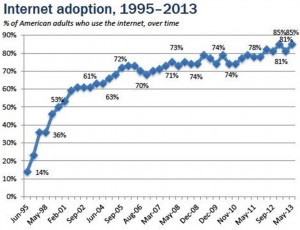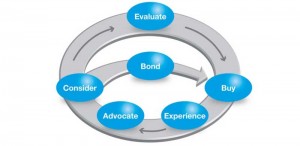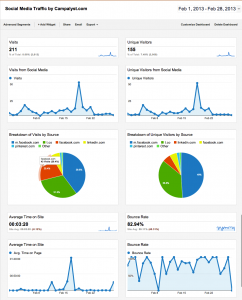 Startup Business Internet Guide
Startup Business Internet Guide
Why Should I Do Business and Market on the Internet?

Using the internet to grow your company is no longer an option—it is the standard, driven by the consumer.
By best estimates, 85 percent of American adults now use the internet, and a growing number of them are shopping online. Ecommerce sales is currently on track to exceed the $1 trillion mark in 2013.
In today’s world, when someone is looking for a product or service the chances are they are doing some if-not-all of their shopping online. Businesses that had a high use of the web increased business by 10% while those with little or no internet business decreased by 5% (source: Boston Consulting Group, The Internet Economy in the G-20, and March 2012).
The question is not “why?” you should do business and market on the internet, but “how?” to intend to do so and make the most of it.
What Role Should the Internet Play in Your Startup Business Plan?
The unprecedented global reach, speed, and efficiency of the Internet offers a critical resource for businesses to inform consumers and promote your brand, services, and products. In addition, using the internet as a fundamental marketing and sales tool is an extremely cost-effective way to reach people either locally or worldwide. Startup business owners adopt and use the internet to generate better and more relevant leads, to introduce customers to new products, or new features of existing products, and to direct customers to the most efficient way to purchase the product in question. The process of internet marketing and sales is now well-established, as illustrated in the model below. The internet provides a highly efficient and cost-effective means for businesses to reach new and existing customers, to create relationships, offer opportunities to experience and sample, and ultimately to purchase.
 Here are some of the major issues you need to think about as your online marketing and sales outreach meets your potential customers in the purchase process:
Here are some of the major issues you need to think about as your online marketing and sales outreach meets your potential customers in the purchase process:
- Consider: what brands/products do consumers have in mind as they contemplate a purchase?
- Evaluate: how do consumers gather information to narrow their choices?
- Buy: what are the key factors that drive consumers to a certain brand and buy it?
- Post-purchase: what factors matter most to consumers as they reflect upon their buying experience and form expectations/considerations that will or will-not lead a subsequent purchase?
- Advocate: what factors will drive consumers (your greatest marketing asset) to tell others about the product or service they purchased?
This framework can help you focus your time, energy and resources to best determine how to allocate your marketing and advertising dollars, know where true opportunities for sales are, and determine what you need to deliver in order to effectively compete.
Using the Internet as a Research Tool Before You Start

Use the Internet to develop your strategy, learn about your customers, and scope out your competition.
Before you start spending money on your internet platform, it is wise to conduct some initial market research, i.e., using online resources such as “Information Strategy and Research” and “Quick Market and Competitive Research.”
In terms of your major competition, you can ascertain information regarding their products, merchandising, distribution strategy, channel distribution, pricing and overall brand positioning.
Google your competitors, use keyword search tools (https://adwords.google.com/keywordtool — is a good free source).
Look at online trends (www.google.com/trends/ — another free resource), view competitors websites and statistics (Alexa, Compete and Quancast have some great free tools to learn about different websites online statistics).
If you’re a retail or e-commerce startup business, in addition to using major search engines such as Google or Bing, search on Amazon and eBay to help you determine how your competitors are using various distribution channels and how they price their products and services.
View potential market and customer demographic information including:
- Population statistics
- Demographics
- Shopping affinities, etc.
There are tons of tools and free sites out there (beware, however—these sites often hook you in on the freebies, and then offer premium tools for a subscription price).
Quantcast is a good quick resource for viewing website statistics, visitor demographics, and interest affinities. ComScore measures what people do as they navigate the digital world and it publishes many studies and a variety of whitepapers that may be relevant to your startup business.
Many data analytics companies, industry publications, and service providers publish papers and studies which are great tools to use. I am amazed at how much industry data and market information is available on the web. For example if you go to www.bpplans.com, you can frequently find preliminary free draft business plans for businesses such as yours.
What Should Your Website Look Like and What Should it Do?
Knowing in advance what you want to achieve with your website is critical to its success. Spend time designing your site, comparing it with others, and “building it out” before you start the actual process.
Another key role of your website is to establish, build, and maintain your credibility as a quality business. For some businesses, their website is more than a marketing tool, and some savvy startup business owners have integrated their websites into their business operations. For example, if you are an online retailer, your website is the “life line” for your startup business, and it needs to function flawlessly from first customer contact to efficient transactions to follow-up service and contact after sale. Monitoring direct sales, tracking promotion and marketing campaigns, and keeping real time inventory are also commonplace in well-run Ecommerce businesses today.
How Much Should I Spend on My Company’s Website?
Depending on your business goals and needs, designing and building a site can range from less than $100 to several thousands of dollars. Some startup businesses have been very successful designing their own sites using free or inexpensive website builders/templates such as WordPress, Volusion, WIX, or Weebly. Most likely, you want something that reflects your own vision and unique startup business. Many designers will work with these template sites to custom size to your needs. In any case you should compare resources and have an outsider review your site and plans. There are now many sites where you can post your website project and receive quotes from experts from around the world. Elance is one such example.
Tracking Your Site’s Performance

Google Analytics provides free real-time analysis and tracking of your site’s activities. This is very valuable in monitoring trends, promotional campaigns and demographics.
Once your site is designed and launched, you will need to track its performance to be sure it is working as you had intended, and that your customers are responding as you had hoped.
Monitoring and tracking your site includes the following types of data capture:
- How many people visit the site, where do they come from, and how long do they stay?
- Where do they spend their time on the site? Do the “click through” or come-and-go?
- What pages have the most site traffic, and how many of these translate to sales?
While there are quite a few paid services offering analytics (Coremetrics and Omniture for example), Google Analytics (www.google.com/analytics ) is a great free tool to track your website’s statistics and key performance indicators. You simply need to install a short code onto each page of your website, and the reports are instantaneously generated. Google Analytics is specifically designed to give you data by page, demographics, time on the site, visits and actual sales, etc. Your problem will generally not be finding the time to look at it but rather getting addicted to the wealth of information it provides.
Final Words About Your Startup Business’ Website
With intelligent design, use, and tracking of your company’s website, you have an opportunity to reach a global audience at levels of efficiency never before dreamed possible.
The most important aspect of the internet is that it is dynamic and interactive. The average consumers receives 50-150 emails, texts, tweets, etc. per day. There are numerous technologies to view the internet including laptops, desktops, iPads, and phones that need to be considered in various parts of your business. Sharing information and communication through tools like the cloud, Skype and Read Me are growing every day.
In summary, you need to evaluate and monitor how every aspect of your startup business is affected and can benefit from using the internet.